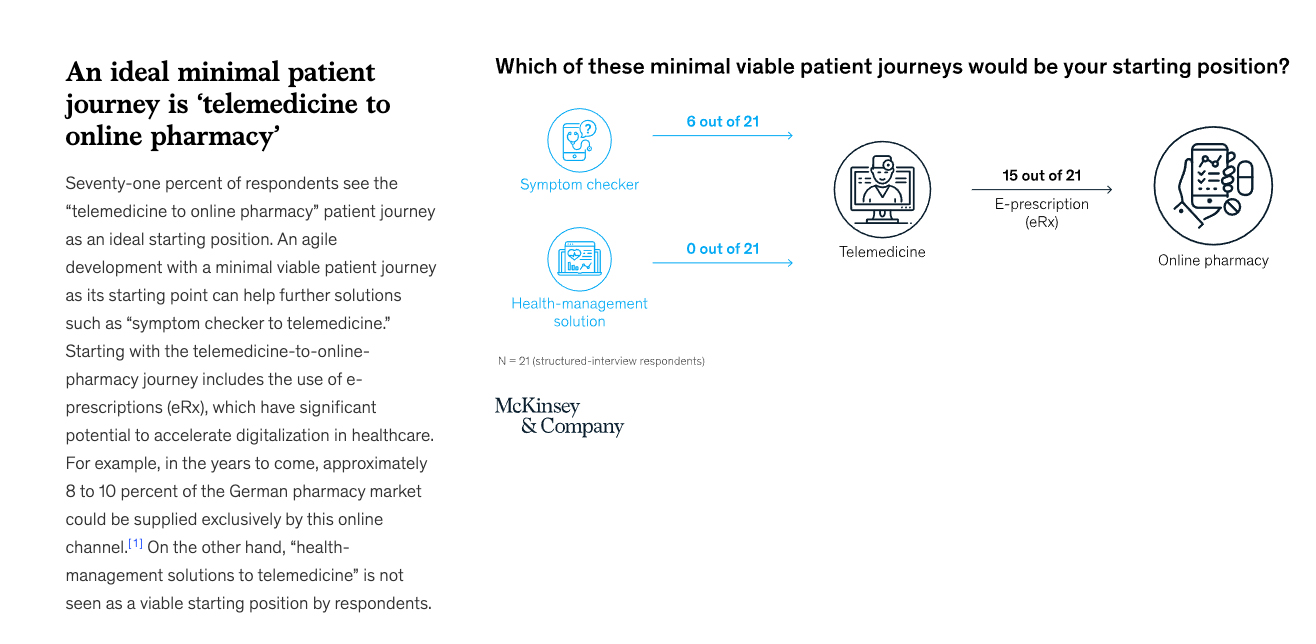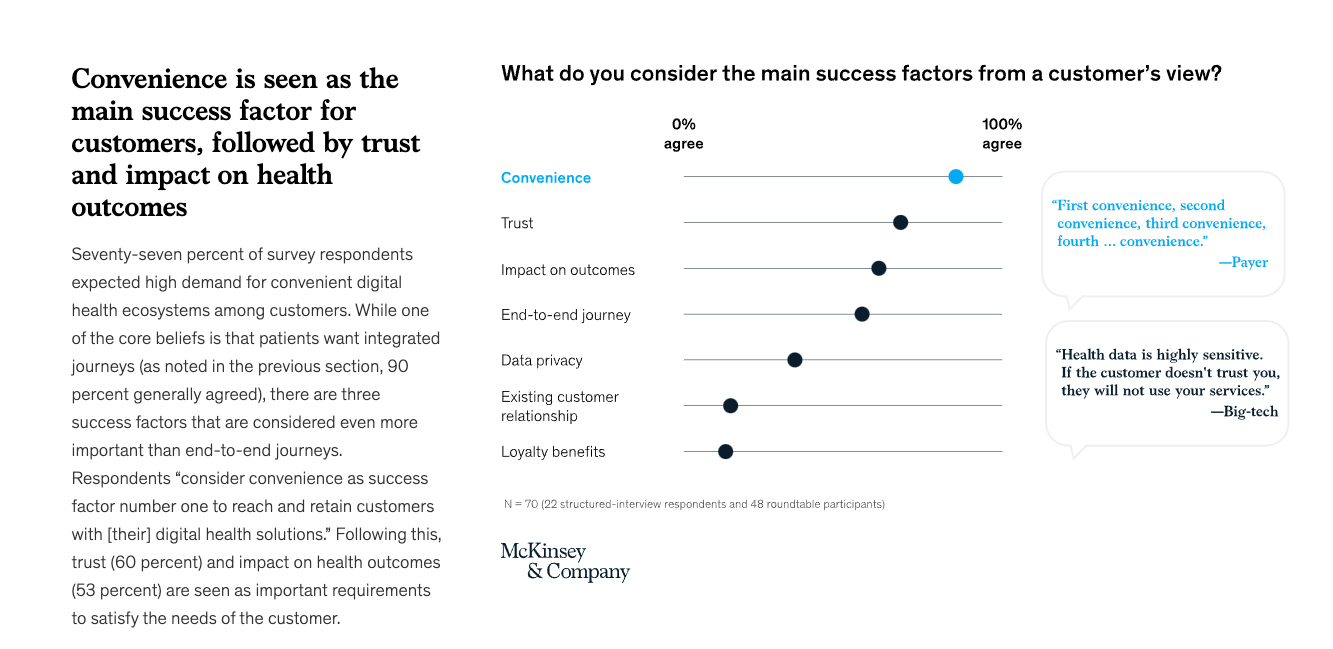The charts come from McKinsey and Co, a large consulting firm, and reflects what their clients are looking towards and what McKinsey is sure to recommend. First, there is an interesting word choice. Physicians and other providers (an equally loathsome term) no longer provide care because patients are now on a journey. We, caregivers, are now Sherpas on the path as navigators and carrying those heavy but necessary journey requirements – seven years or more of post-college education and training, malpractice insurance should there be an “incident,” etc. You might also note that health management would prefer our journey begin with a
 symptom checker – stand by for the Siri’s of healthcare to ask you a series of questions, no doubt chosen by artificial intelligence (another smoke and mirror buzzword of consulting). No more will a physician, distracted by an electronic health record, ask you questions; you will have the full uninterrupted attention of an algorithm.
symptom checker – stand by for the Siri’s of healthcare to ask you a series of questions, no doubt chosen by artificial intelligence (another smoke and mirror buzzword of consulting). No more will a physician, distracted by an electronic health record, ask you questions; you will have the full uninterrupted attention of an algorithm.
Perhaps the more frightening thought from management is contained in the following chart.

Yes, of all the measures of success, the critical metric is convenience. I am not sure whether I am more concerned that management or patients believe this – OK, this is a management no-brainer; I am worried that convenience is the most essential for my patients. Outcomes, whether you get better or not, trail behind convenience! What is the rush in getting bad care? Looking at those other categories, you get the real sense that patients have morphed into health consumers whose end-to-end journey is improved by customer relationships and loyalty benefits. Every appointment is worth 15 health credits, overnight stay in the hospital 150 – collect enough, and you can get a free screening or refrigerator magnet to remind you to take your medicines assuming the algorithm and provider agree.
Source: Digital health ecosystems: Voices of key healthcare leaders McKinsey and Co




